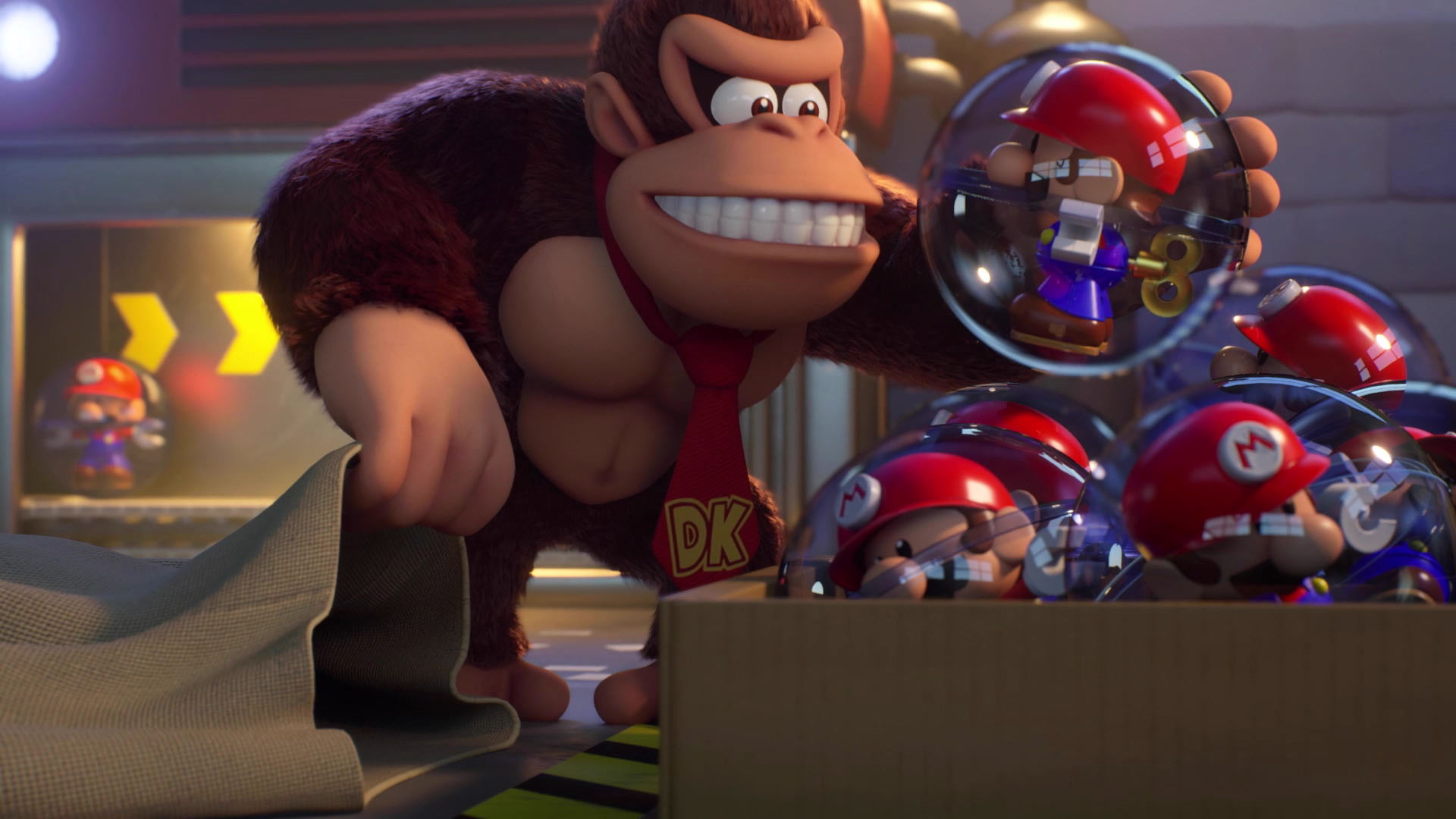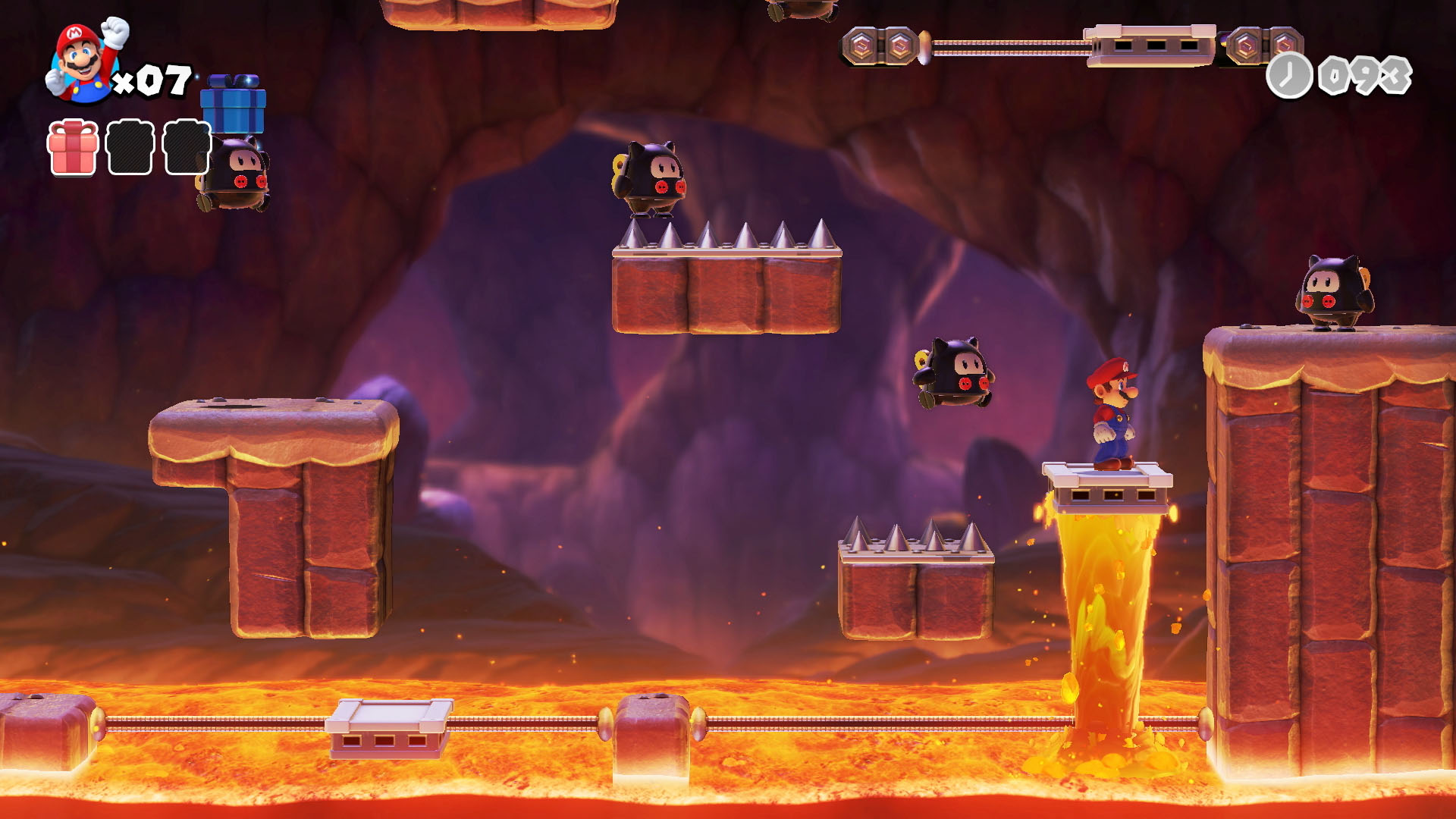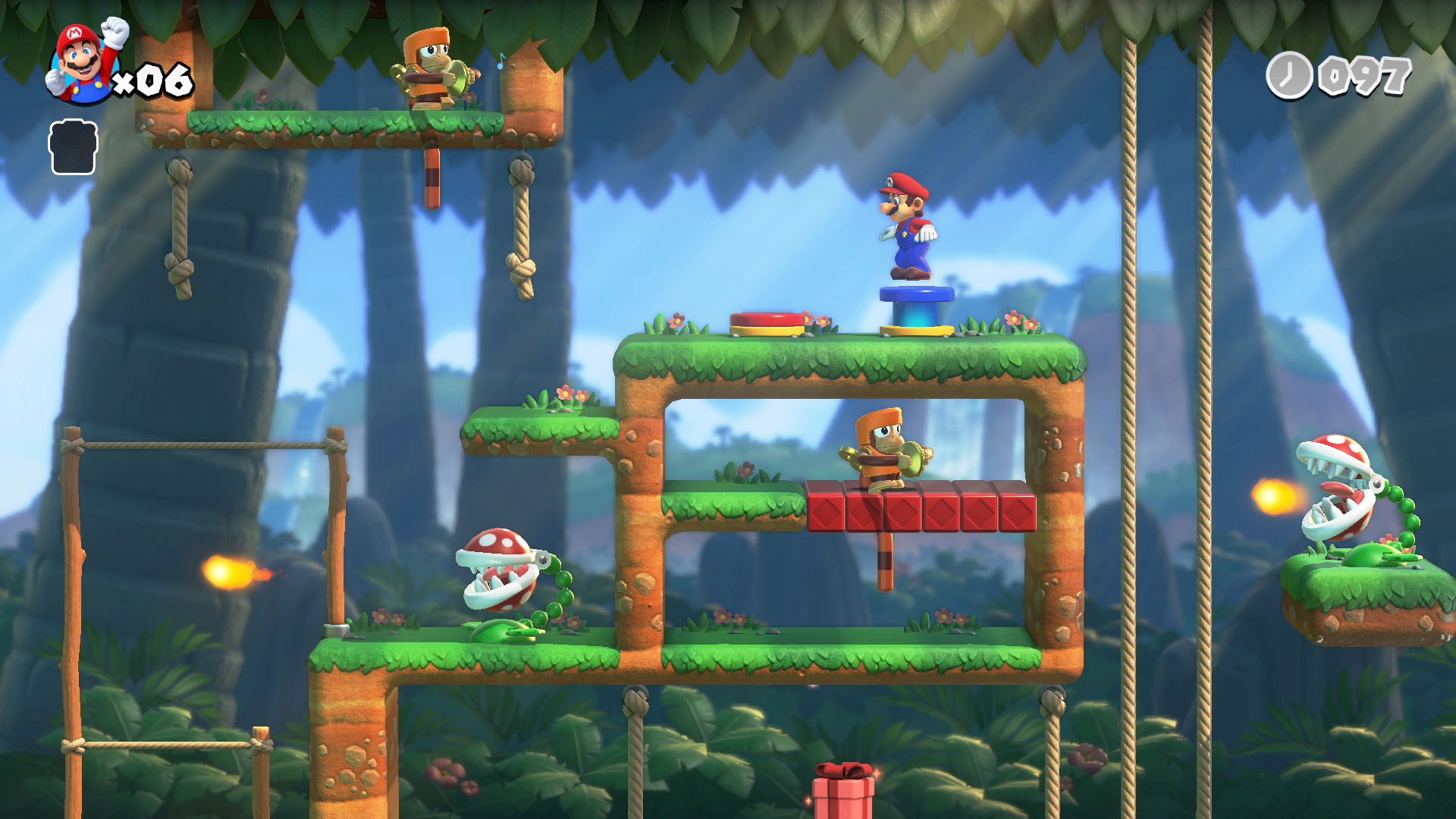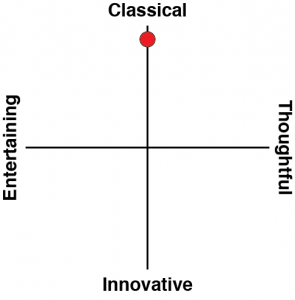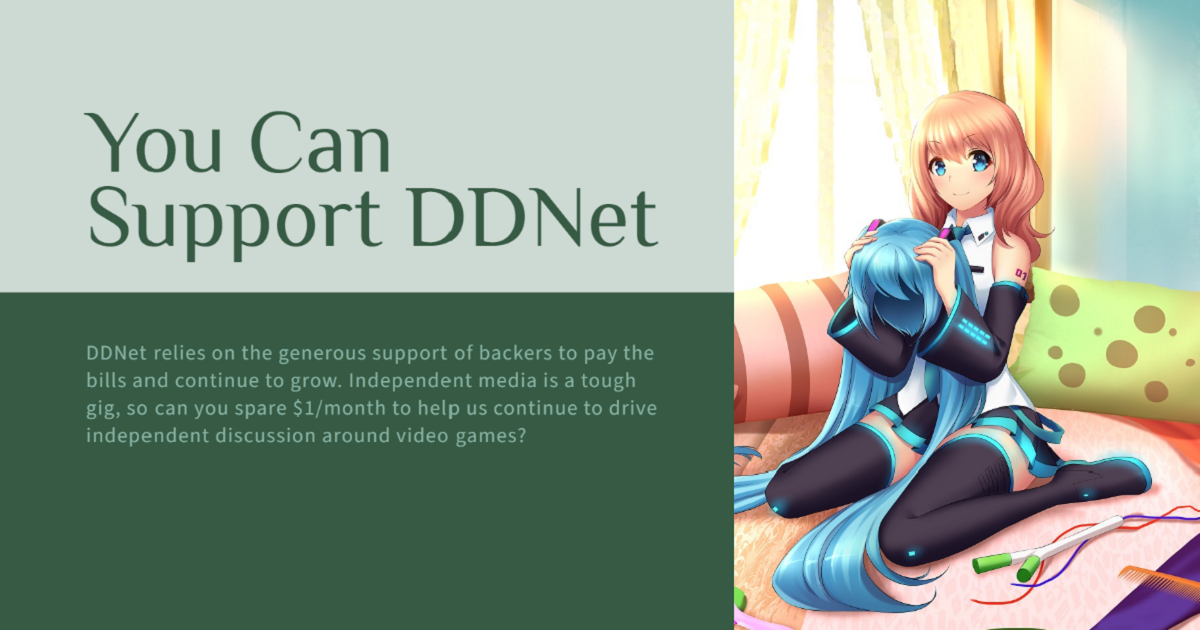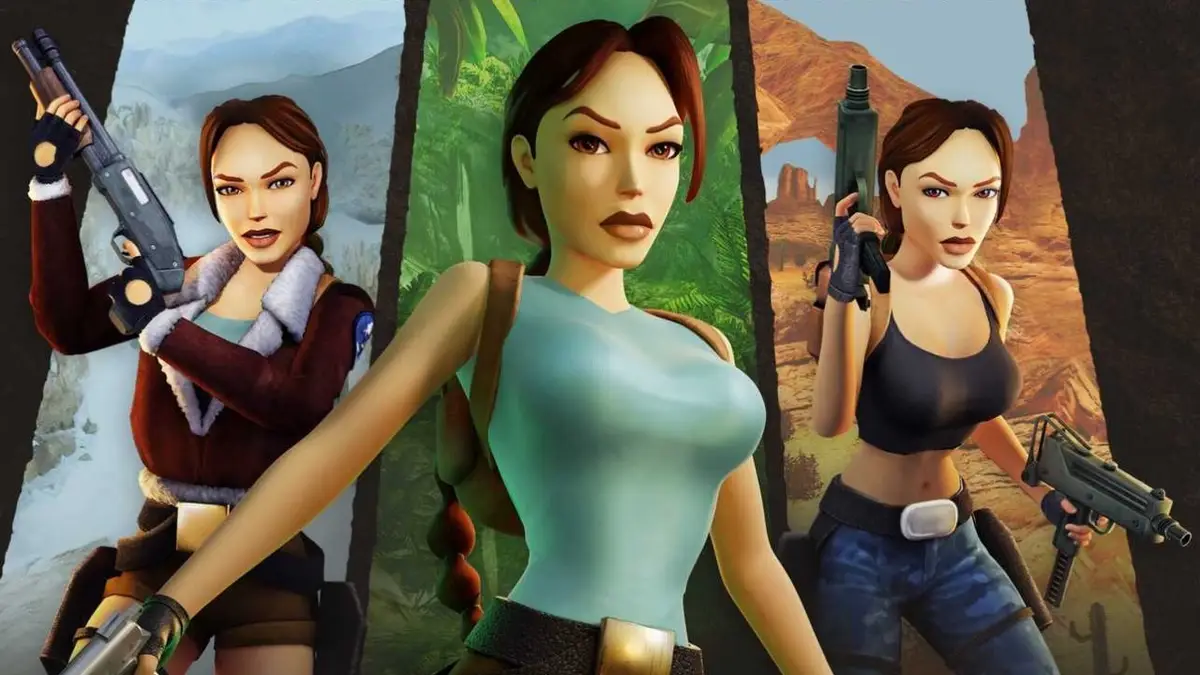I’m starting to get a little peeved at Nintendo for not remaking Fire Emblem (as in the first Fire Emblem to be released in the West; the one with Lyn). Not only is there a game there that would desperately benefit from modern production values (Lyn and her lovely dress in detail rather than pixels!) but it would surely be a massive hit release. Instead, we get a remake of… Mario Vs. Donkey Kong.
To be abundantly clear, this is a very (very) good puzzle platformer. The original, released on the GBA way back in 2004, was a semi-sequel and spinoff to Donkey Kong ’94 on the Game Boy, and it’s the finest example of this particular sub-series of Nintendo’s. Nintendo has done a few other ones in the years since, featuring the Lemmings-like Mario Minis, but Mario Vs. Donkey Kong hits the sweet spot between platforming and puzzling that remains as compelling now as it was 20 years ago.
It’s not a lazy remake, either. Mario Vs. Donkey Kong has a substantial visual update that brings it in line with the modern Mario aesthetic. The developers have already added a bunch more levels (bringing the total up to 130), and even a multiplayer mode.
That multiplayer mode is cooperative and, frankly, a little pointless as one person is inevitably going to end up being a passive participant. The purpose of a puzzle game is to figure the puzzle out for yourself, and if the other player is better at puzzles, they’re just going to bark advice and instructions at you, so you’re not going to be engaging with the experience in the way that you’re meant to. However, for parents with young kids… and kids that might be getting frustrated at the puzzles, allowing the parent to jump in and help out a little is a nice touch. The multiplayer mode also changes some of the levels around to make it a challenge for two people, so completionists might have fun running through it with a buddy.
Meanwhile, in another effort to make the game accessible to everyone, there is a “casual” mode, which removes the stress-inducing timer and allows Mario to take some damage before having to restart a level. This mode makes the game vastly too easy, given that it wasn’t the most difficult experience in the first place, but that’s also the point.
Then there are the “showoff” modes, with a “plus” mode (which offers all-new puzzles and challenges), and an “expert” mode. However, the most important is the time trials, where you need to zoom around and complete levels as quickly as possible. I can see some longevity in this with people trying to shave seconds off their time, and then brag about that on social media. The levels aren’t overly long, but have plenty of nuance and complexity in their design that makes trying to speed run them a whole different kind of skill tester.
There’s plenty of content, is what I’m saying here. The big problem that Mario Vs. Donkey Kong faces is a lack of complexity and creativity. With most of the game being a remake of a Game Boy Advance title, the constraints in game design are clear to see. We’re now used to Nintendo’s teams of maverick creatives coming up with wildly inventive new ideas with an almost shocking frequency across the distance. Super Mario Bros. Wonder, for example, was a game of breathtaking scope for just how far the developers were able to push the 2D platforming genre.
By comparison, Mario Vs. Donkey Kong settles into a rhythm where the levels are different as you play through them, but the way that you play them is not. When you get to the new levels, you start to see that modern Nintendo magic back, but for the most part, while Mario Vs. Donkey Kong looks the part of a new game, it doesn’t take too long to make its origins clear.
I had a lot of fun playing (or, more accurately, replaying) Mario Vs. Donkey Kong. It’s a brightly-coloured, wholesome good time, and the rare all-ages puzzle game that strikes the right balance between making sure that everyone that plays it feels smart, without being condescending about it. As much fun as it is, however, this is one of the most transient games that Nintendo has published in quite some time. You’ll play it, enjoy it, and very quickly forget about it because it is, ultimately, a remake of once of Nintendo’s most niche titles – a title that was niche for a very good reason.
